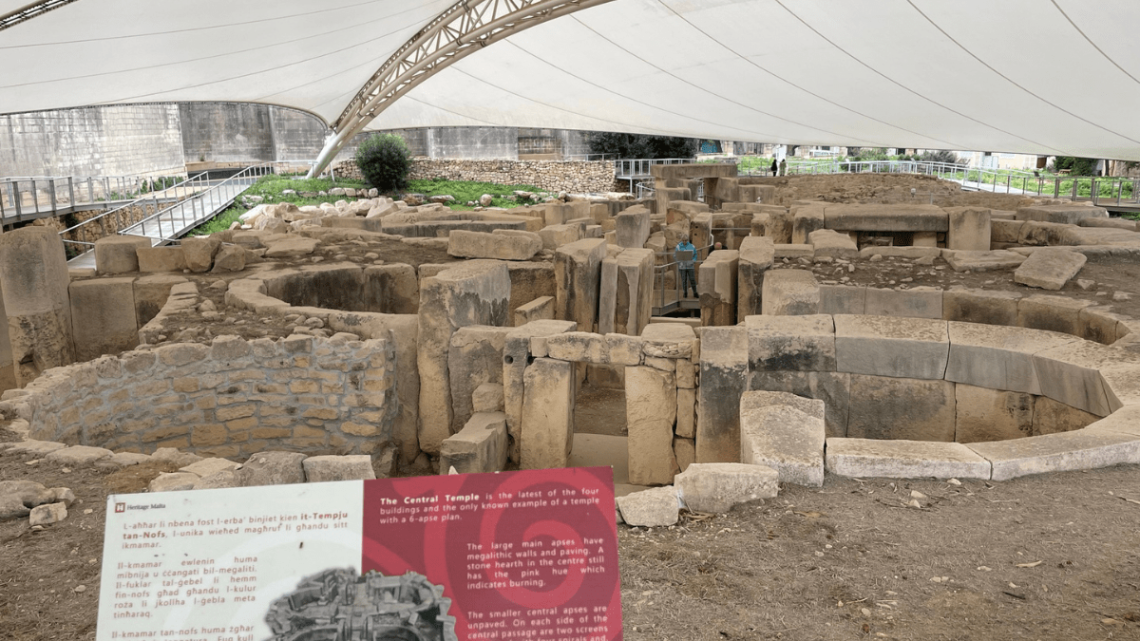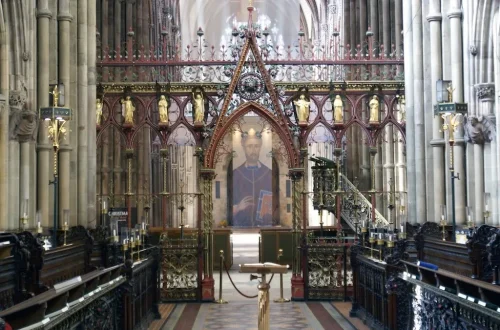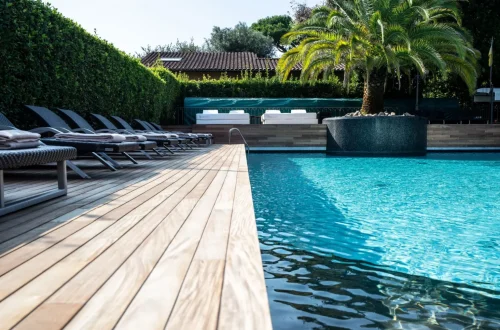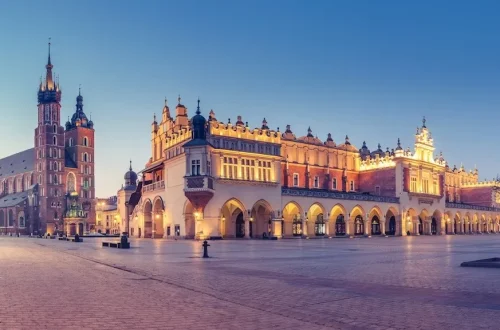Because of its location in the Mediterranean, Malta has a fascinating history that goes all the way back to the Paleolithic era, includes a period ruled by the (some would say, mysterious) Knights of St John, and has also been in the middle of pivotal modern wartime events.
When I travel at Christmas, my destination criteria are roughly the same as most of my trips: good food and interesting history, and then one very important one: preferably mild weather. After some extensive research, Malta emerged as the front-runner that fit within my budget on my most recent Christmas trip.
It’s genuinely a fascinating place with ancient temples, medieval fortifications and World War II bunkers. Add the food to that, and you’ve got yourself an excellent holiday. Of course, there is so much more – I saw both beautiful beaches (even in December) and gorgeous coastline. I thought I’d share my itinerary from my 2024 Christmas trip.
Exploring Malta
After spending a week in Malta and reflecting on my time there, I noticed that, unsurprisingly, I spent most of my time in the places with lots of ‘old stuff’. Of course, St Julians and Sliema are nearby and very modern, so if you’re after more of a beachy holiday, they are your go-to, but if you want something with a much smaller chance of getting sand in your shoes, you’ll be interested in:
Valletta
Malta’s capital is a UNESCO World Heritage site with lots of old buildings, (hilly) winding streets, museums and little places to eat. I stayed there so I could explore when I wasn’t out on day trips, but most people were staying in nearby Sliema where there is more space for modern buildings. If you can’t find a place to stay in Valletta it’s because there aren’t that many; the old buildings don’t really allow for hotels. But because a Maltese friend of mine said I really should be staying in Valletta, in the end, I had to go with an AirBnB option.
The city was founded in 1566 by the Knights of St. John under the leadership of Grand Master Jean Parisot de la Valette (hence the name) and it was designed to boost the island’s defences. The Upper Barrakka Gardens are great for panoramic views of the Grand Harbour and the Three Cities; Republic Street and Merchant Street have plenty of shops, cafes and landmarks like the Grandmaster’s Palace (recently reopened) and St John’s Co-Cathedral, which are absolutely must-visit sites (more on those later).
Valletta is surrounded by water on three sides, so if you enjoy water and maritime activities (without the sand!) you’re in luck. The Grand Harbour is one of the world’s largest natural harbours, and the Marsamxett Harbour on the opposite side is a bit more tranquil and overlooks Sliema.
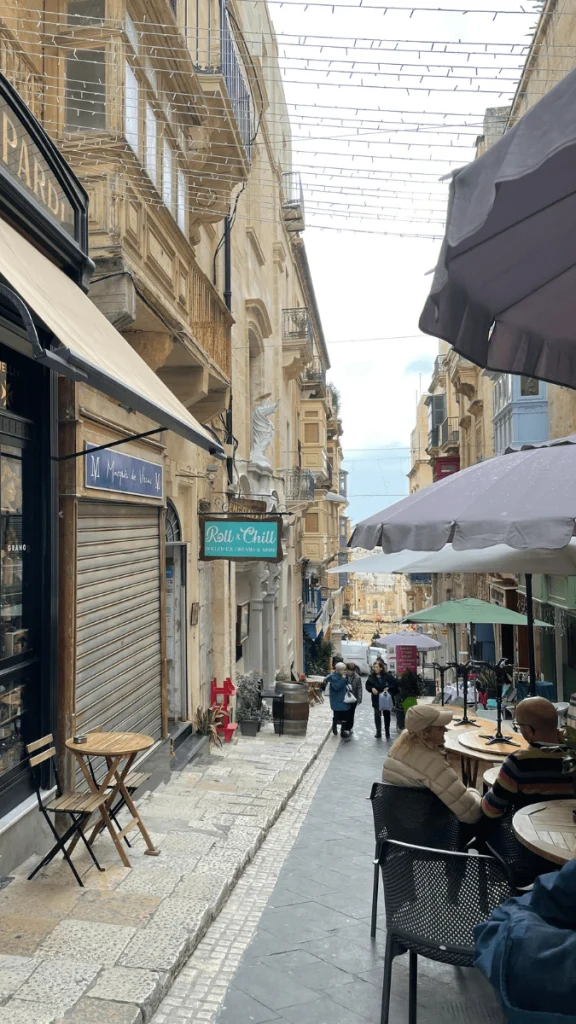
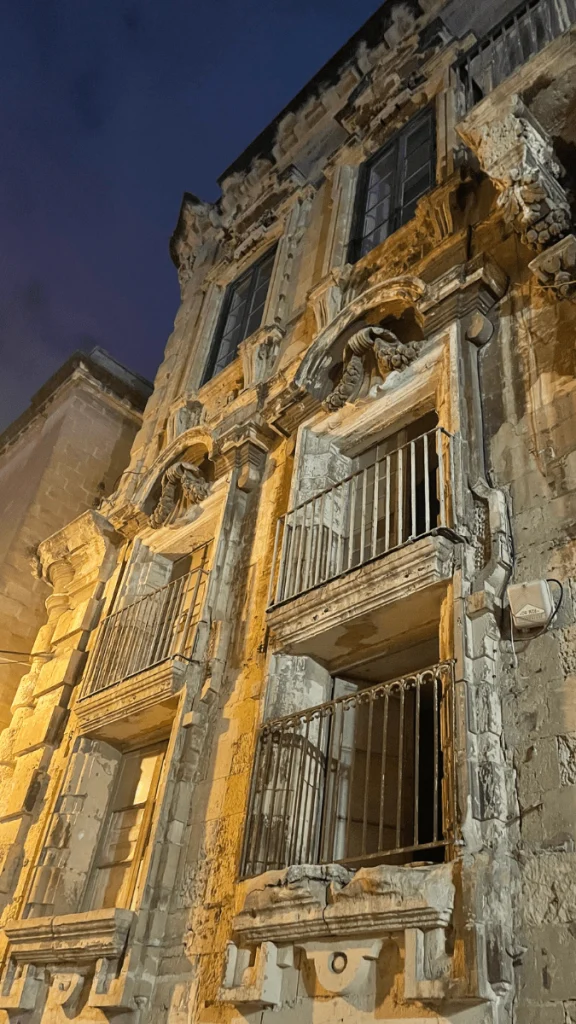
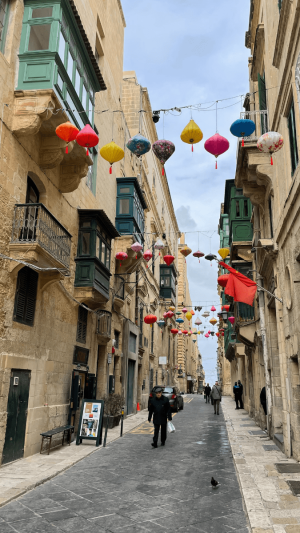
Mdina
Mdina (also known as the ‘Silent City’) is Malta’s former capital – it changed to Valletta when the Knights of St John took over. Mdina is quiet, has beautiful medieval and baroque architecture, plenty more winding streets and seriously stunning views of the coast (and because Malta is so small, you can identify the landmarks easily). It dates back over 4,000 years and was fortified by the Phoenicians around 700 BC because it sits on the top of a hill in the centre of the country (defence is essential). Make sure you leave plenty of time to stop by the bastions so you can make the most of the views. If Mdina sounds like your vibe, you’ll want to stay in nearby Rabat.
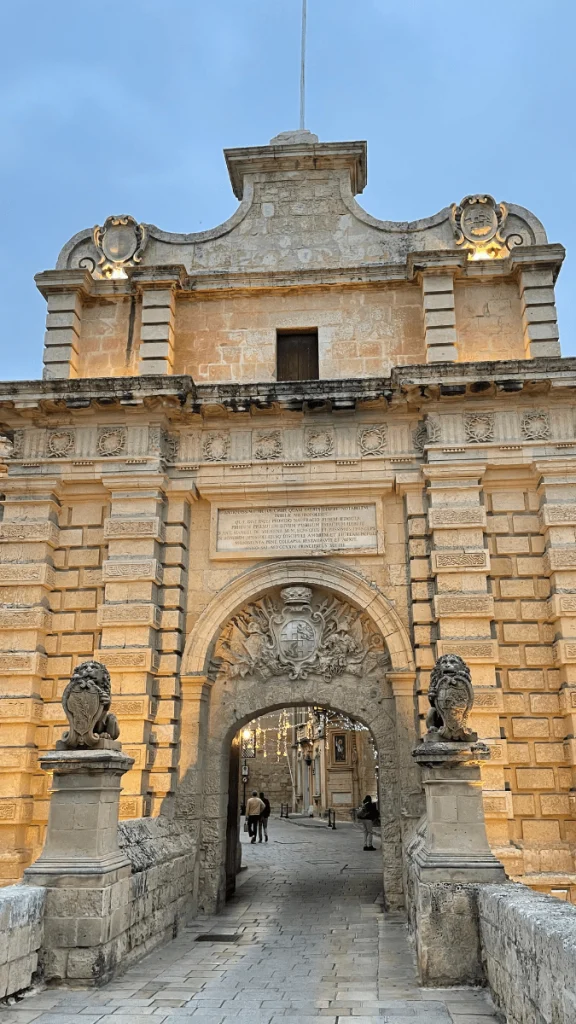
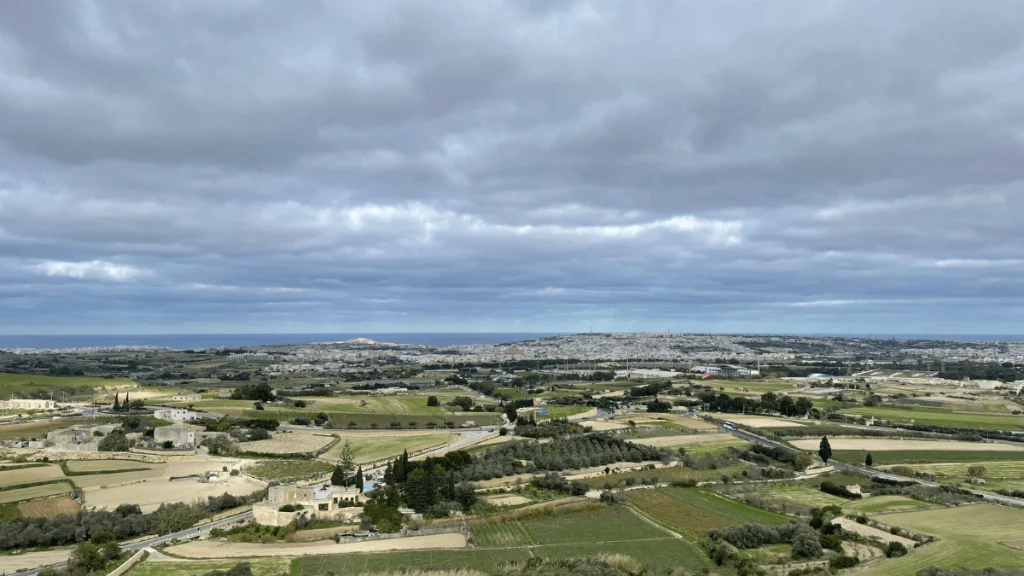
The Three Cities (Vittoriosa, Cospicua, Senglea)
Across the Grand Harbour are the fortified cities of Vittoriosa, Cospicua and Senglea. They are collectively known as the Three Cities and are known for impressive fortifications, more of those charming winding streets and beautiful waterfronts.
Vittoriosa, also known as Birgu, served as the base for the Knights of St John before Valletta was established. The city is home to the Inquisitor’s Palace and the Maritime Museum, both of which provide great insights into Malta’s historical and cultural heritage. Senglea, or Isla, offers stunning views from its Gardjola Gardens, while Cospicua, or Bormla, is known for its fortifications and beautiful churches.
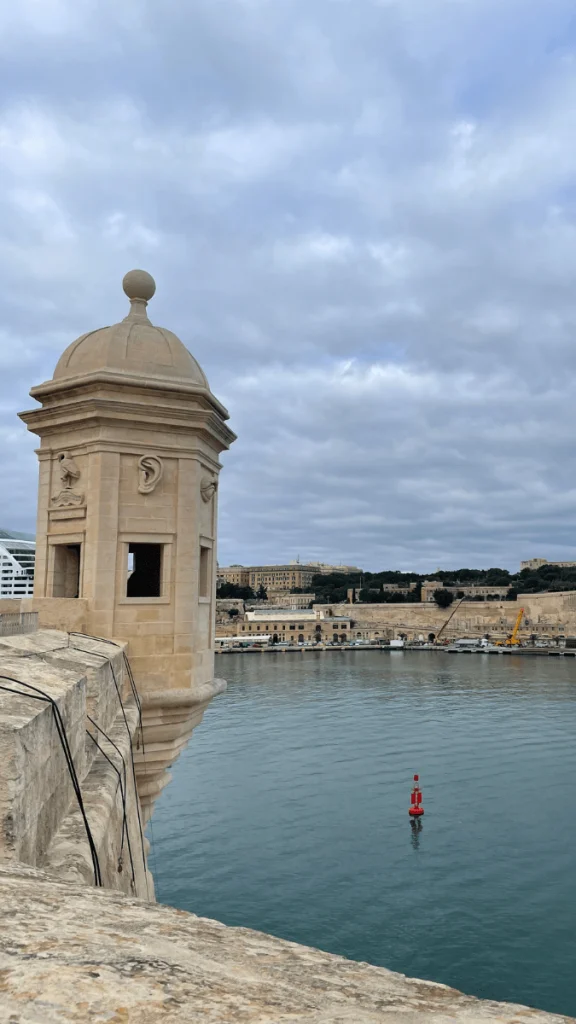
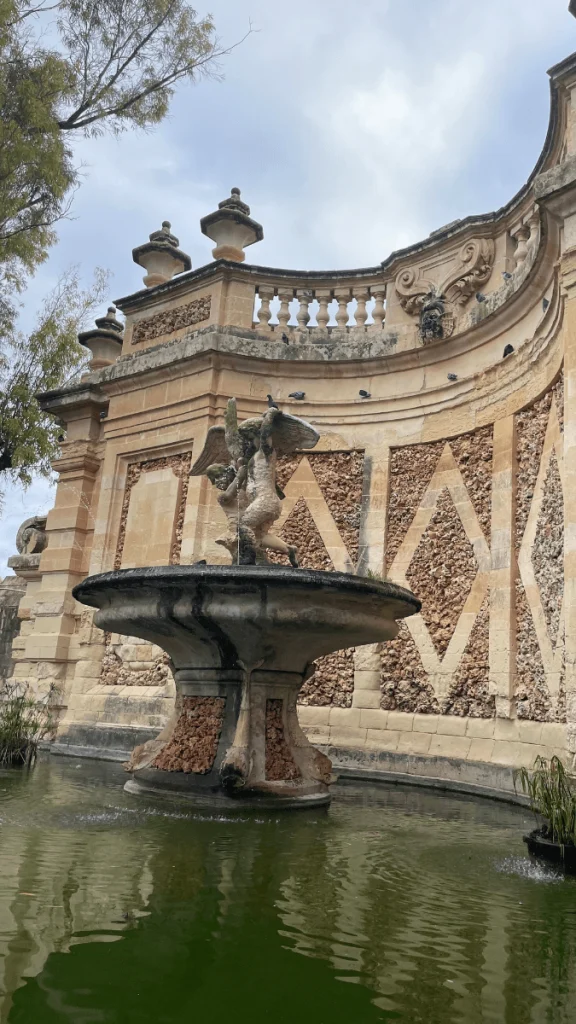
If you can, I recommend hiring one of the traditional dghajsa tal-pass water taxis (used since the 17th century). A warning: they are very low to the water, so if you get a bit stressed out by that sort of thing, they may not be for you. But, by touring in one of these boats, you’ll get a unique perspective of the Grand Harbour, and it’s easy to imagine what the area was like without modern buildings. You can also see the location used for Hollywood films. While we were there, they were filming Gladiator 2 – we tried to catch Pedro Pascal’s attention, but he couldn’t hear us.
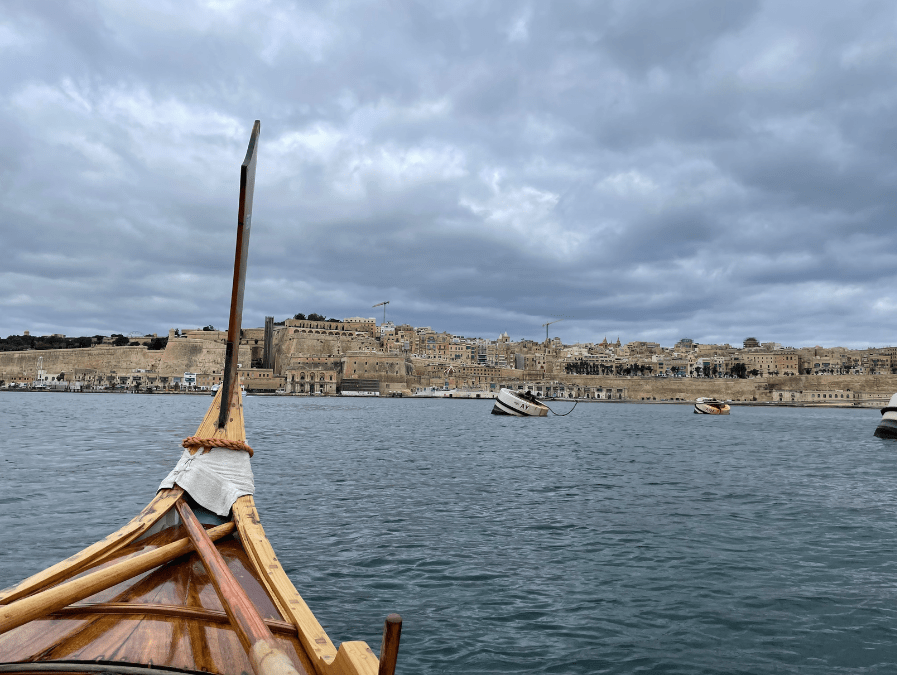
Marsaxlokk
Marsaxlokk is a beautiful fishing village on the southeastern coast (about 30 minutes drive from Valletta). It has that classic seaside charm and is famous for its colourful fishing boats (known as luzzus). It’s a good opportunity to see Malta’s maritime traditions properly.
You don’t visit Marsaxlokk for adventure, you visit to relax, stroll along the waterfront, admire the boats and enjoy fresh seafood at one of the (many) restaurants.
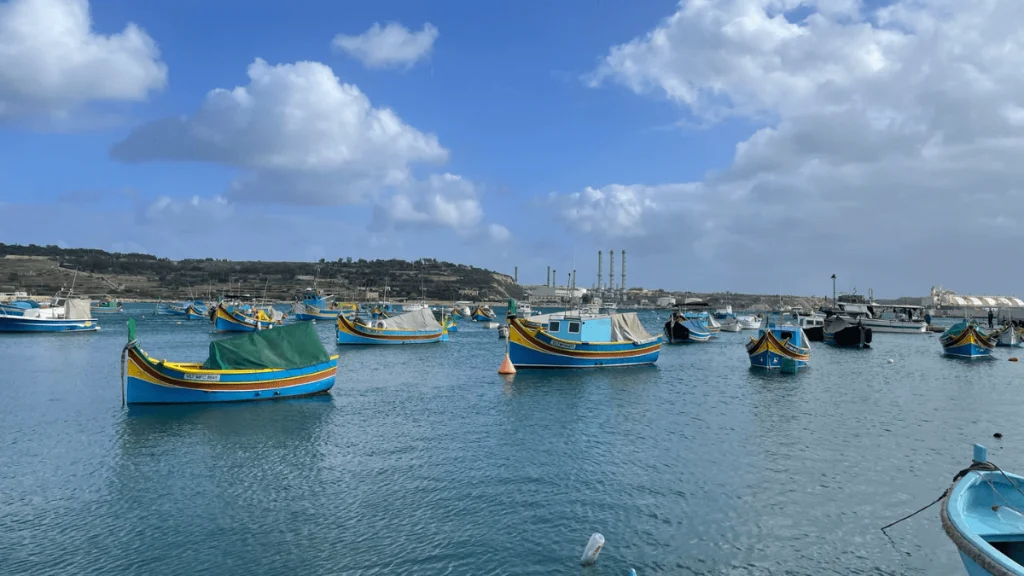
Historical sites in Malta
Ancient history
For history and archaeology lovers, it’s heaven – every site I visited gave me a glimpse into the lives of Malta’s early inhabitants. You wander around sites imagining what the people were doing there 5,000 years ago and some of the construction is so impressive, you can’t help but wonder if there really were some aliens helping out (ha, just kidding!). I set my week up to visit as many sites as possible and it was so worth it:
Tarxien Temples: These temples, near Valletta, are an amazing example of Malta’s megalithic architecture and my favourite from this trip. You’ll see temples with intricate carvings that show animals and other symbolic patterns, offering a tiny bit of insight into the religious and ceremonial practices of prehistoric Malta. You can jump on a bus from the centre of Valletta and then take a short walk to the site and entry is only €6 per person.
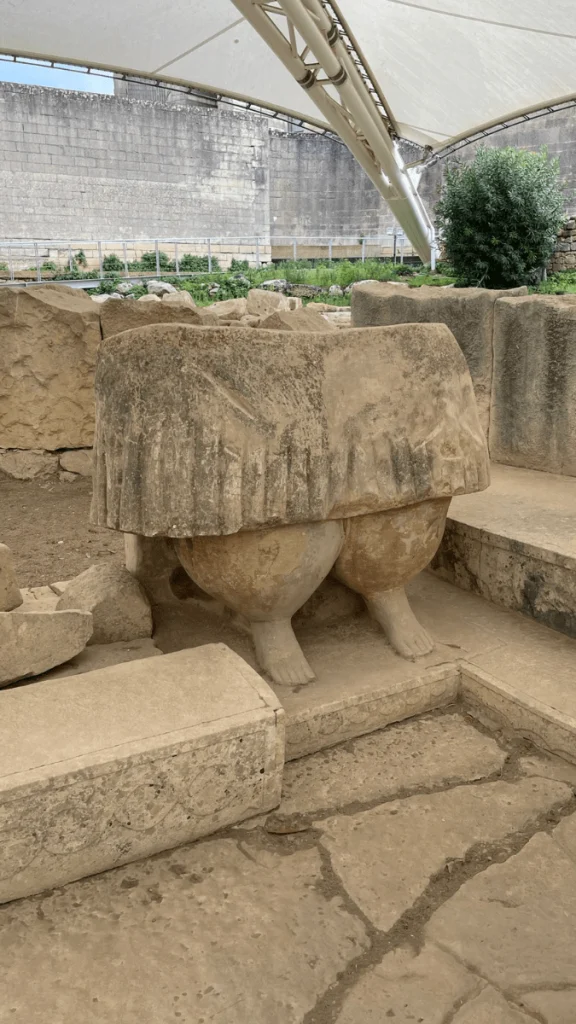
Hal Saflieni Hypogeum: The Hypogeum, in Valletta, is an underground necropolis dating back to 4,000 BC. It was discovered in 1902 and opened to the public not long after. You won’t believe the burial chambers are hand-carved. And then there are the red ochre paintings and other carved figures – it’s a surreal space to be in and you’ll be pleased you went (though, I’d avoid it if you’re not excited about being underground or in small spaces). This is a must-visit, but you need to book in advance and all the visits are timed – primarily precautions to ensure the site’s continued longevity. It’s also one of the most expensive sites I visited at approximately €35 per person. Apologies, no photos are allowed inside, so you’ll have to see it for yourself.
Hagar Qim: Overlooking the Mediterranean, the Hagar Qim temples are another stunning example of Neolithic construction. They were built between 3,600 and 3,200 BC and are known for their sophisticated construction techniques and intricate stone carvings, which include altars and oracular chambers. Sadly, we didn’t get a chance to visit the nearby Mnajdra, but you should definitely make time. Entry is €10 per person.
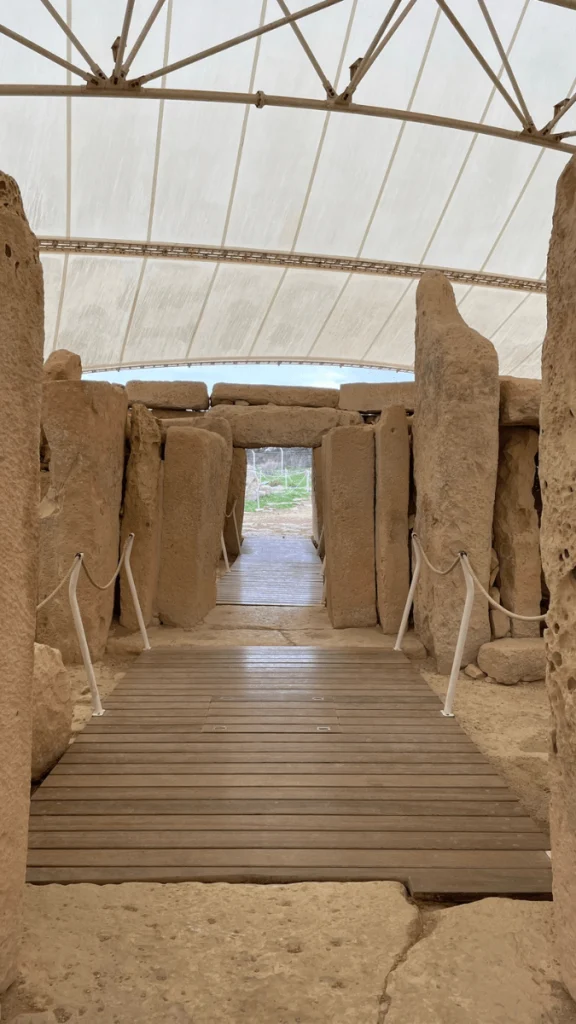
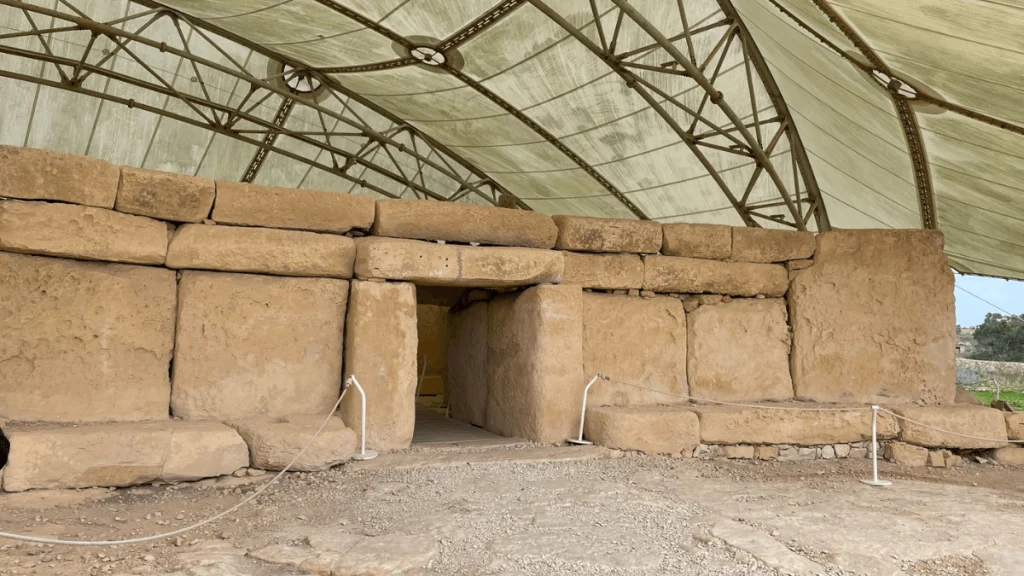
Ggantija Temples: When you visit Gozo, you must make time for the Ggantija Temples – they are some of the oldest freestanding structures in the world, dating back to 3,600-2,500 BC. They are considered ancient engineering marvels because, in some cases, the builders used singular, massive stone blocks. Entry is €10 per person.
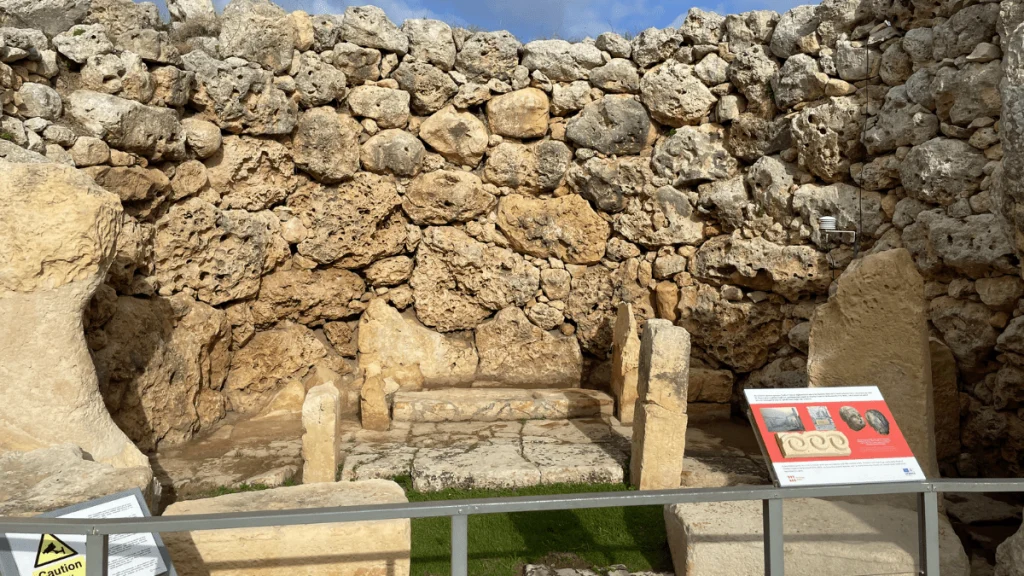
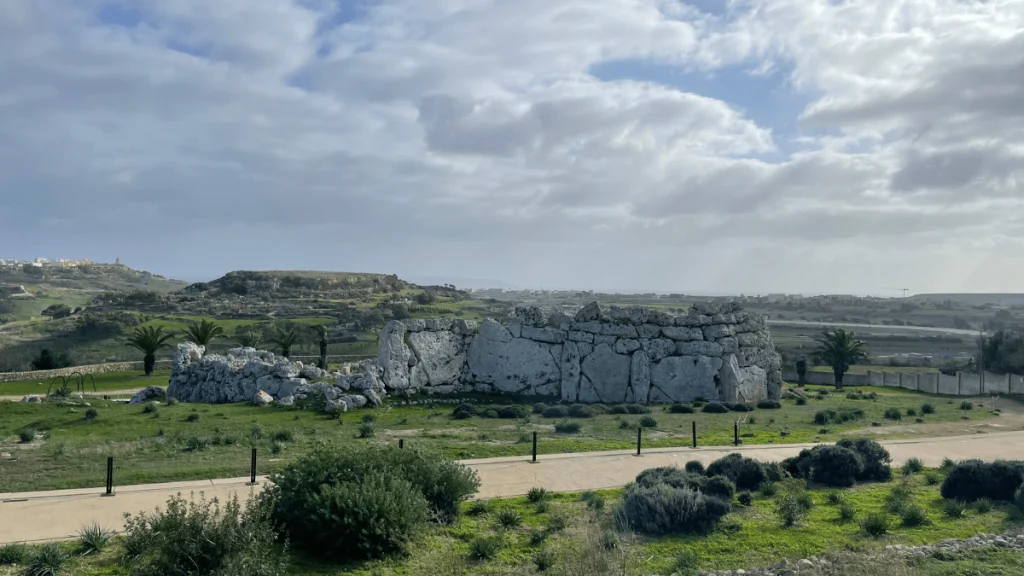
Later historical sites and museums
Malta’s more recent history and cultural heritage are equally fascinating. I made it to a few of the museums that showcased some of island’s later history and changes over the centuries. Sadly, I didn’t get to the WW2 sites.
The Grandmaster’s Palace: Right in the centre of Valletta and only recently reopened. It’s a stunning example of Malta’s opulent architecture. Originally built in the 16th century, it now houses the Office of the President of Malta. You can wander the magnificent rooms, housing intricate tapestries, frescoes and historic artefacts. The palace also features exhibitions that delve into Malta’s history and the legacy of the Knights of St. John. Entry is €12 per person.
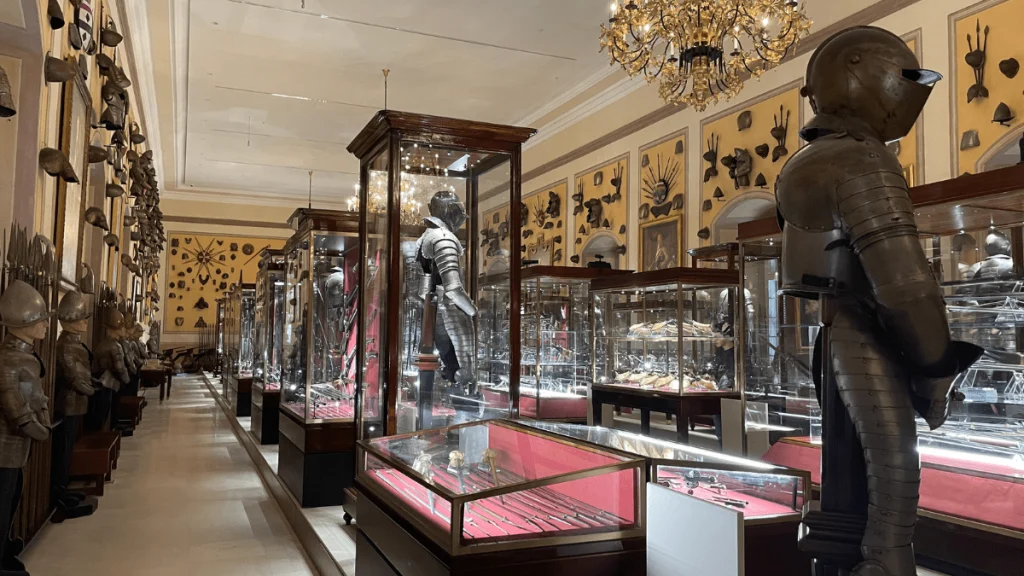
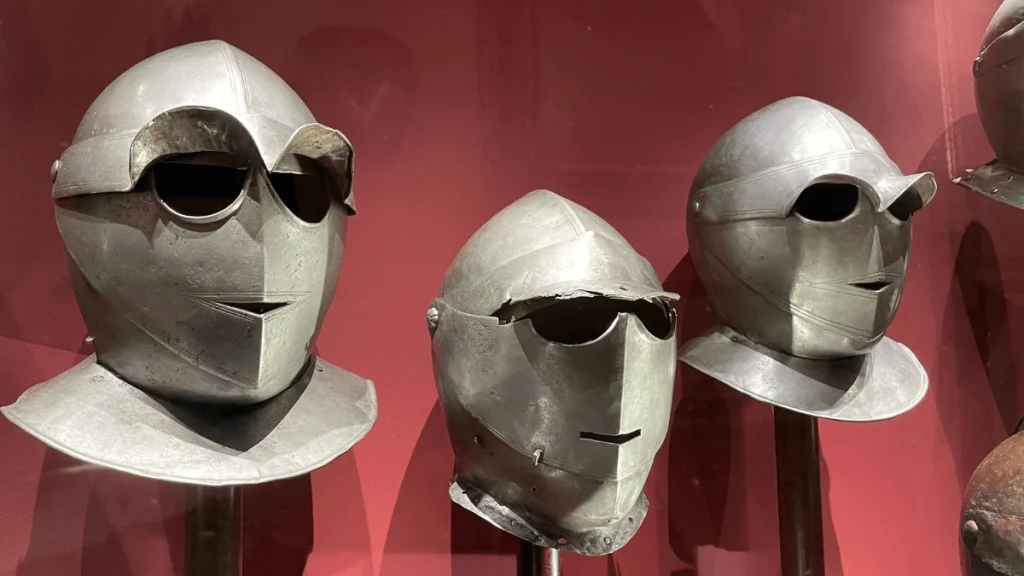
St. John’s Co-Cathedral: Yes, co-cathedral, located in Valletta, is an immense masterpiece of Baroque art and architecture. Constructed in the late 16th century, its interior is incredibly lavish – decorated with gold leaf, marble, and intricate carvings. The cathedral is home to several works by artist Caravaggio, including his famous painting, “The Beheading of Saint John the Baptist”. Prepare for an initial overwhelm as you try to figure out where to look first. Entry is €15 per person.
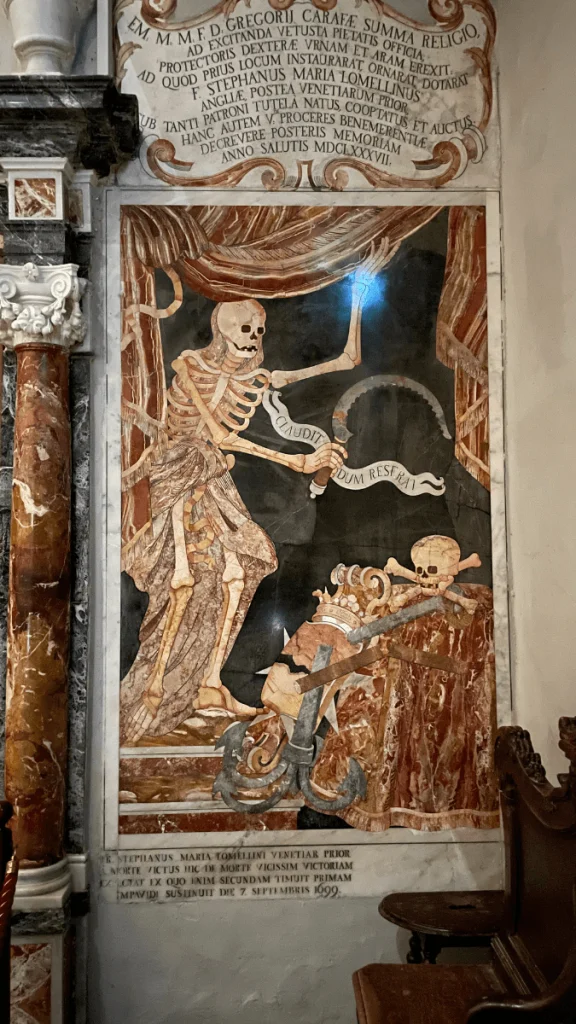
The Inquisitor’s Palace in Vittoriosa is part historic house and part ethnography museum. The 16th-century building was the seat of the Inquisition in Malta, and its preserved rooms and artefacts reveal the impact it had. You’ll see exhibits on the judicial, religious and domestic practices which give a small glimpse into the tension between authority and the local population. Entry is €6 per person.

Bonus: MUZA – The Malta National Community Art Museum. I wanted to include something arty to break things up a bit. Housed in the Auberge d’Italie, one of the ‘houses’ owned by the Knights of St John in Valletta. MUZA showcases a diverse collection of art, including both the classic and the modern. I really enjoyed wandering the installations, so if you enjoy art, this is definitely one for you. Entry is €10 per person.
What to do on Christmas Eve and Christmas Day in Malta?
This is the important question you’ll be asking while considering a trip to a Christian country over Christmas. Because they are run by the Maltese government, most of the historical sites and attractions are closed on Christmas Eve and Christmas Day, but many restaurants are open. It’s actually a really good opportunity to wander Valletta or one of the other towns. Public transport is available on those days (check the times, though!) so if you decide not to hire a car and drive around, you can jump on a bus to explore. I was thankful to find that a friend was also staying in Malta at the same time and that she and her partner had hired a car, and they were happy for me to tag along on a Christmas Eve adventure.
Get your history fix in the Mediterranean
Malta’s rich history, culinary delights, and gorgeous landscapes made it an ideal destination for a solo traveller. Whether ancient temples are your thing, you love Baroque masterpieces, or just love immersing yourself in local flavours, I think Malta promises something for everyone.

